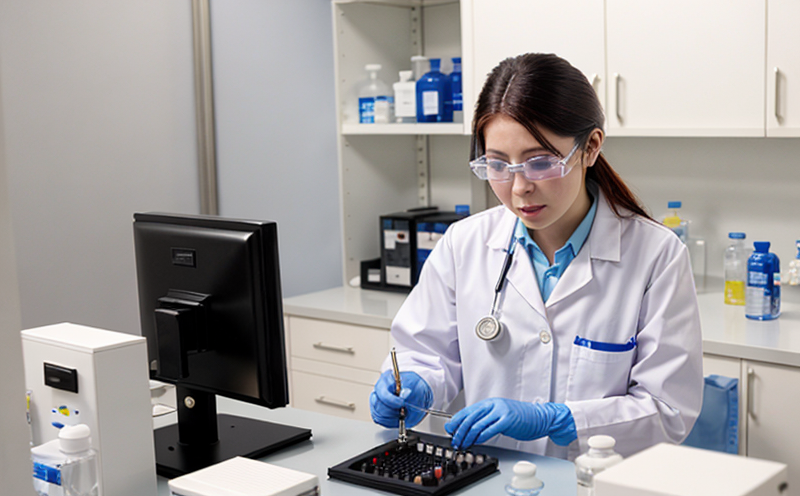Pharmaceutical Good Laboratory Practice (GLP): Ensuring Quality and Integrity
The pharmaceutical industry relies heavily on laboratory testing to ensure the quality, safety, and efficacy of its products. To guarantee that this testing is conducted accurately and reliably, regulatory authorities worldwide have established guidelines for Good Laboratory Practice (GLP). In this article, we will delve into the principles and requirements of GLP, highlighting its significance in maintaining the integrity of pharmaceutical research and development.
What is Pharmaceutical Good Laboratory Practice (GLP)?
Pharmaceutical GLP is a set of principles that outline the minimum standards for laboratory testing to ensure the quality and reliability of data. It was first introduced by the Organization for Economic Co-operation and Development (OECD) in 1979, with the aim of promoting international harmonization and consistency in laboratory practices. The OECDs Principles of Good Laboratory Practice were later adopted by regulatory authorities such as the US FDA, EU EMA, and others.
Key Principles of GLP
The core principles of GLP are designed to ensure that laboratory testing is conducted impartially, accurately, and with strict adherence to protocols. These key principles include:
Quality assurance: Establishing a quality management system to ensure the accuracy and reliability of data.
Documentation: Maintaining accurate and detailed records of all experiments, including procedures, results, and conclusions.
Organization: Defining clear roles and responsibilities within the laboratory, as well as establishing procedures for personnel training and evaluation.
Equipment maintenance: Regularly maintaining equipment to ensure it is in good working condition and accurately calibrated.
Testing protocols: Developing and following strict testing protocols to minimize variations and errors.
GLP Requirements for Study Conduct
A GLP-compliant study involves several stages, each with specific requirements:
Study initiation: Defining the study objectives, scope, and testing protocols.
Study protocol: Documenting all procedures, including personnel roles, equipment calibration, and data management.
Test article specification: Defining the test articles identity, composition, and packaging.
Pre-study phase: Ensuring that laboratory facilities, equipment, and personnel are suitable for conducting the study.
Equipment validation: Verifying that all equipment is calibrated, validated, and properly maintained.
Personnel training: Providing training to ensure personnel understand their roles and responsibilities in conducting the study.
Study conduct: Conducting the study according to the approved protocol.
Data recording: Accurately recording data, including observations, measurements, and results.
Equipment maintenance: Regularly checking equipment to ensure it is functioning properly.
GLP Requirements for Study Reporting
After completing a GLP-compliant study, laboratories must report their findings accurately and transparently:
Study report: Documenting all aspects of the study, including methods, results, and conclusions.
Data analysis: Presenting data in a clear and concise manner, with any statistical analyses or calculations clearly documented.
Results interpretation: Providing an objective discussion of the results, highlighting any limitations and potential implications.
Appendices and attachments: Including all supporting documentation, such as raw data, calibration records, and equipment validation certificates.
Study protocol amendment history: Documenting any changes made to the original study protocol.
Implementation of GLP in Pharmaceutical Research
Pharmaceutical companies, contract research organizations (CROs), and laboratories must implement GLP principles in all stages of product development:
Research and development: Conducting preclinical studies, including toxicology, pharmacokinetics, and efficacy tests.
Clinical trials: Conducting phase I-IV clinical trials to assess safety and efficacy in humans.
Manufacturing and quality control: Ensuring that manufacturing processes are controlled and monitored to meet regulatory requirements.
Benefits of GLP
The benefits of implementing GLP principles include:
Increased data reliability: Reducing errors and inaccuracies, ensuring reliable results.
Improved study efficiency: Streamlining laboratory operations, reducing timelines and costs.
Enhanced compliance: Ensuring adherence to regulatory guidelines, minimizing the risk of regulatory non-compliance.
Challenges in Implementing GLP
Despite its benefits, implementing GLP principles can be challenging:
Resource-intensive: Requiring significant investments in training, equipment, and personnel.
Time-consuming: Adding complexity and time to study planning and execution.
Cost implications: Increasing costs due to additional documentation, personnel, and equipment requirements.
QA Section
Here are some frequently asked questions about Pharmaceutical GLP:
Q: What is the purpose of GLP?
A: The primary goal of GLP is to ensure that laboratory testing is conducted accurately, reliably, and with strict adherence to protocols, thereby maintaining the integrity of pharmaceutical research and development.
Q: Who regulates GLP compliance?
A: Regulatory authorities worldwide, including the US FDA, EU EMA, and others, have adopted the OECDs Principles of Good Laboratory Practice. Compliance is mandatory for all laboratories conducting studies that support pharmaceutical product registration.
Q: What is the significance of a quality management system in GLP-compliant laboratories?
A: A quality management system ensures that laboratory testing is conducted accurately and reliably by documenting procedures, personnel roles, equipment calibration, and data management.
Q: Can laboratories conduct non-GLP studies?
A: Yes, but these studies must be specifically approved and exempted from GLP requirements. In such cases, the study design, methods, and protocols may deviate from GLP guidelines.
Q: How do I determine if a laboratory is GLP-compliant?
A: Verify that the laboratory maintains accurate documentation of all experiments, including procedures, results, and conclusions, adheres to strict testing protocols, and ensures equipment calibration and maintenance.
Q: What are some common GLP compliance issues?
A: Common issues include inaccurate or incomplete documentation, inadequate personnel training, and failure to follow approved study protocols.

































